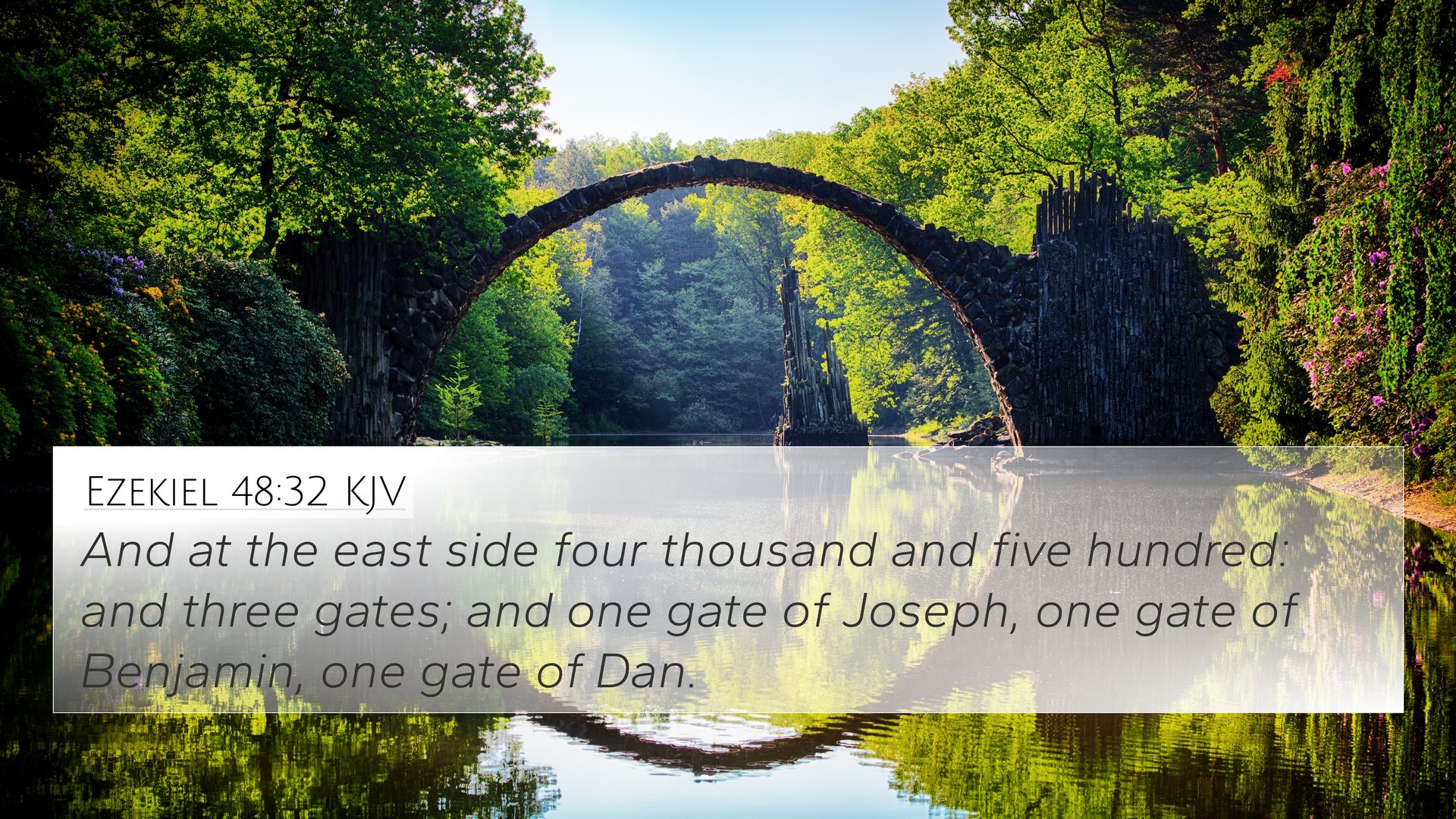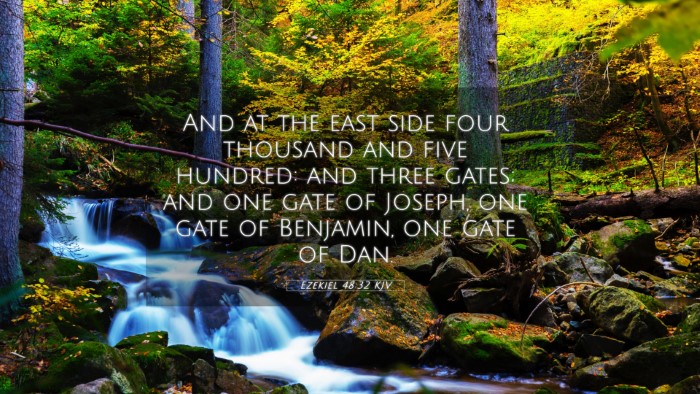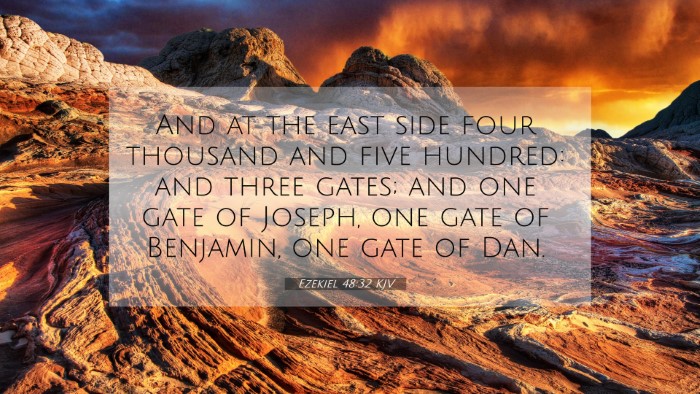Ezekiel 48:32 - In-Depth Meaning and Commentary
Ezekiel 48:32 states, "And at the east side four thousand and five hundred reeds; and gate of this city shall be according to the names of the tribes of Israel: three gates northward; one gate for Reuben, one gate for Judah, and one gate for Levi."
This verse is rich in symbolic meaning and geographical significance within the context of the prophetic visions of Ezekiel concerning the future of Israel.
Overview of Ezekiel's Vision
The book of Ezekiel captivates readers with its vivid imagery and prophetic messages. Particularly in the latter chapters, Ezekiel details the vision of a restored Israel, centered around a new temple and an orderly allocation of land among the tribes of Israel.
Historical Context
Written during the Babylonian exile, Ezekiel's prophecies provide hope and reassurance to those who have been displaced from their homeland. The detailed description of Israel's future forms a framework that speaks not only to the Israelites of his time but also to future generations looking for meaning and order amid chaos.
Commentary Insights
Several prominent commentators have explored the depths of Ezekiel 48:32, providing a communion of insights:
-
Matthew Henry emphasizes the idea of restoration. He points out that the gates named after the tribes signify God's faithfulness in fulfilling His promises to Israel, allowing each tribe to retain its identity within the greater whole of the nation.
-
Albert Barnes notes that the specific mention of the gates and their names indicate the importance of unity among the tribes. Each gate symbolizes access to God’s presence and the blessings of the land, which is a testament to the inclusivity of God's covenant.
-
Adam Clarke focuses on the geographical aspects, suggesting that the measurements and gate arrangement reflect divine order and symmetry. This structured layout is not only practical but also allegorical for the spiritual order God desires among His people.
Thematic Connections and Cross-References
Ezekiel 48:32 embodies themes of Israel's restoration, identity, and divine order, which can be cross-referenced with several other scriptures:
- Isaiah 54:3 - Promises increase and expansion for Israel.
- Revelation 21:12 - The gates of the New Jerusalem named after the tribes of Israel highlight continuity between the Old and New Testament.
- Ezekiel 37:22 - God’s promise to unite the tribes is echoed, reinforcing themes of unity.
- Numbers 2:3 - The original allotment and positioning of the tribes during the Exodus serve as a precursor to Ezekiel's vision.
- Hebrews 11:10 - Abraham looked for a city whose builder and maker is God, symbolizing the hope of restoration.
- Jeremiah 31:31-34 - The new covenant speaks of deepening relationships with God, which is marked by access similar to the gates described.
- Micah 4:6-7 - The promise of restoration for the remnant also reflects the fulfillment of God’s plans for His people.
Applications for Bible Study
For those exploring this verse through a broader scriptural lens, several methods can be employed:
- Cross-reference Bible study: Utilize tools like a Bible concordance to locate parallel verses and themes.
- Comparative Bible verse analysis: Examine how similar themes appear across different books and authors within Scripture.
- Bible reference resources: Take advantage of study Bibles and guides that offer insights into historical and prophetic contexts.
Conclusion
Ezekiel 48:32 serves as a window into God's faithfulness and the future hope He provides for believers. By understanding its significance through cross-referencing with other Bible verses, readers gain a richer insight into the narrative of restoration and divine purpose.
These connections support the growth of personal faith and communal identity within the context of God's overarching plan.
Engaging with this passage through organized studies can aid in enhancing one’s understanding of biblical themes, fostering an inter-Biblical dialogue that is essential for spiritual growth.


